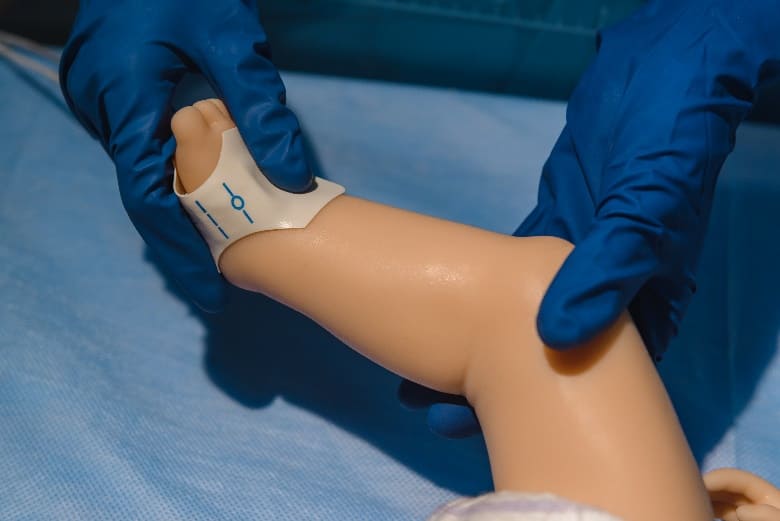
Neonatal Simulator - Care for our future
Mia- High Fidelity trainer for acute neonatal Emergencies

Mia- High Fidelity trainer for acute neonatal Emergencies
Mia is a state-of-the-art newborn simulator designed to meet the challenges of specialist training in neonatal care. From basic assessment to critical thinking skills in emergency scenarios, Mia will enable profound learning experience that are transferable to clinical practice promoting safer patient care and improved outcomes.
One of the benefits of Mia is that she can be used as both a newborn as well as an infant.


Gender - Female
Height - 21.5”
Wight- 9 lbs




in-situ and 'Just in time' training
The wireless design of Mia and her extensive battery life (7-8 hrs) enables in-situ simulation training to take place in the NICU and will help to overcome challenges in training schedules, enhance performance in new teams and provide an opportunity to practice rare emergency scenarios just before patient admissions.Use with real medical devices
Being able to use real medical devices is paramount in simulation-based training. This factor erases the boundaries between a real patient and a simulator.
ECG, defibrillation, pacing, capnography, medical ventilator with different modes (A/C, SIMV, CPAP, PCV, PSV, NIPPV, setting PEEP values up to 20 cmH2O)
Realistic skin and airways
We understand how important for neonatologist's intubation is, this is why Mia's airways are as realistic as possible, wear-resistant material makes sure that trainees can intubate again and again - until they perfect it. Feel more knowledgeable and confident, when you work with real tiny patients in your professional life. Band aids,moulage,etc Mia's skin can be easily cleaned to as good as new.Anatomically accurate upper airway
Orotracheal and nasotracheal intubation
Head tilt, chin lift, jaw thrust
Laryngeal mask airway insertion
Pneumothorax
Sellick manoeuvre
Positive pressure ventilation
Programmable airway resistance
Pharyngeal airflow obstruction
Esophageal intubation
BVM ventilation
Cyanosis and acrocyanosis
Bilateral chest rise and fall
Programmable bilateral bronchi resistance
Intubation depth detection and logging
Tongue edema
Laryngospasm
Spontaneous breathing
Programmable respiratory complications
Programmable respiratory rate
Respiratory rate synced to patient monitor vital signs
Programmable chest rise and fall
Mechanical ventilation (PCV and VCV) PEEP (up to 40 cm H2O)
Variable bronchi resistance
Audible needle decompression with realistic feedback
High-fidelity heart, lung and bowel sounds
Independent normal/abnormal heart sounds
Independent normal/abnormal lung sounds
Normal/abnormal bowel sounds
Auscultation of Korotkoff sounds
Programmable bilateral chest rise and fall, synced with breathing
Tonic and clonic seizures
Programmable blinking rate
Programmable palpable fontanel
Rich library of ECG rhythms
ECG heart rate of 20 to 200 bpm
Real ECG electrodes
Anatomically accurate landmarks to position your hands for chest compressions
Chest compressions
Defibrillation, cardioversion and cardiac pacing using real devices
Defibrillator pads correct placement and logging
Defibrillation in manual and automatic modes
Successful compressions with their logging and effect on HR and ECG
Cyanosis
Programmable pulse strength
Realistic chest compressions
Automatic activity log, displaying all user actions
Depth, frequency, hands placement assessment and log
Automated logging of ventilation volume
Manual configuration of CPR protocols
Printable detailed CPR assessment
Intravenous access (umbilical, temporal, dorsal hand)
Intraosseous access (tibia, bilateral)
Realistic joint articulation
Sounds: crying, screaming, coughing, moaning, grunts
Pre-installed themes, scenarios, programs and the Scenario Constructor software to design your own scenario
Realistic bone structure, palpable ribs, kneecaps and many more
Automated articulation of arms, legs and jaws